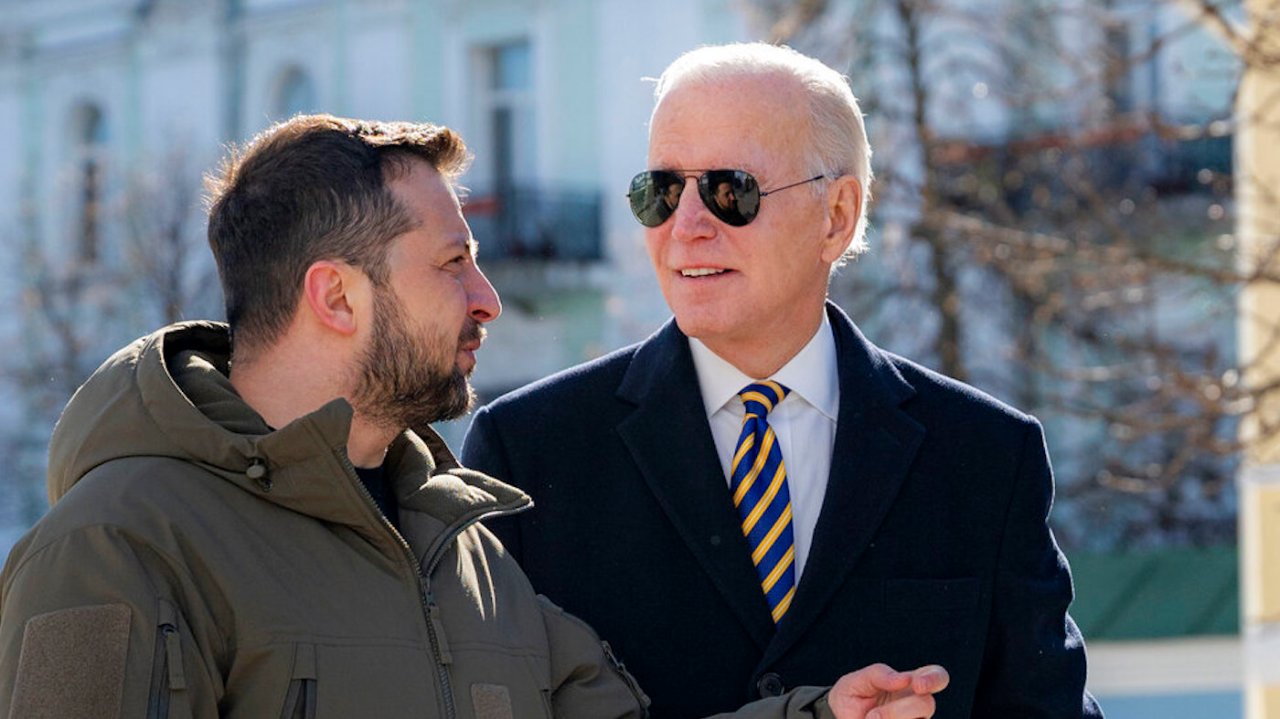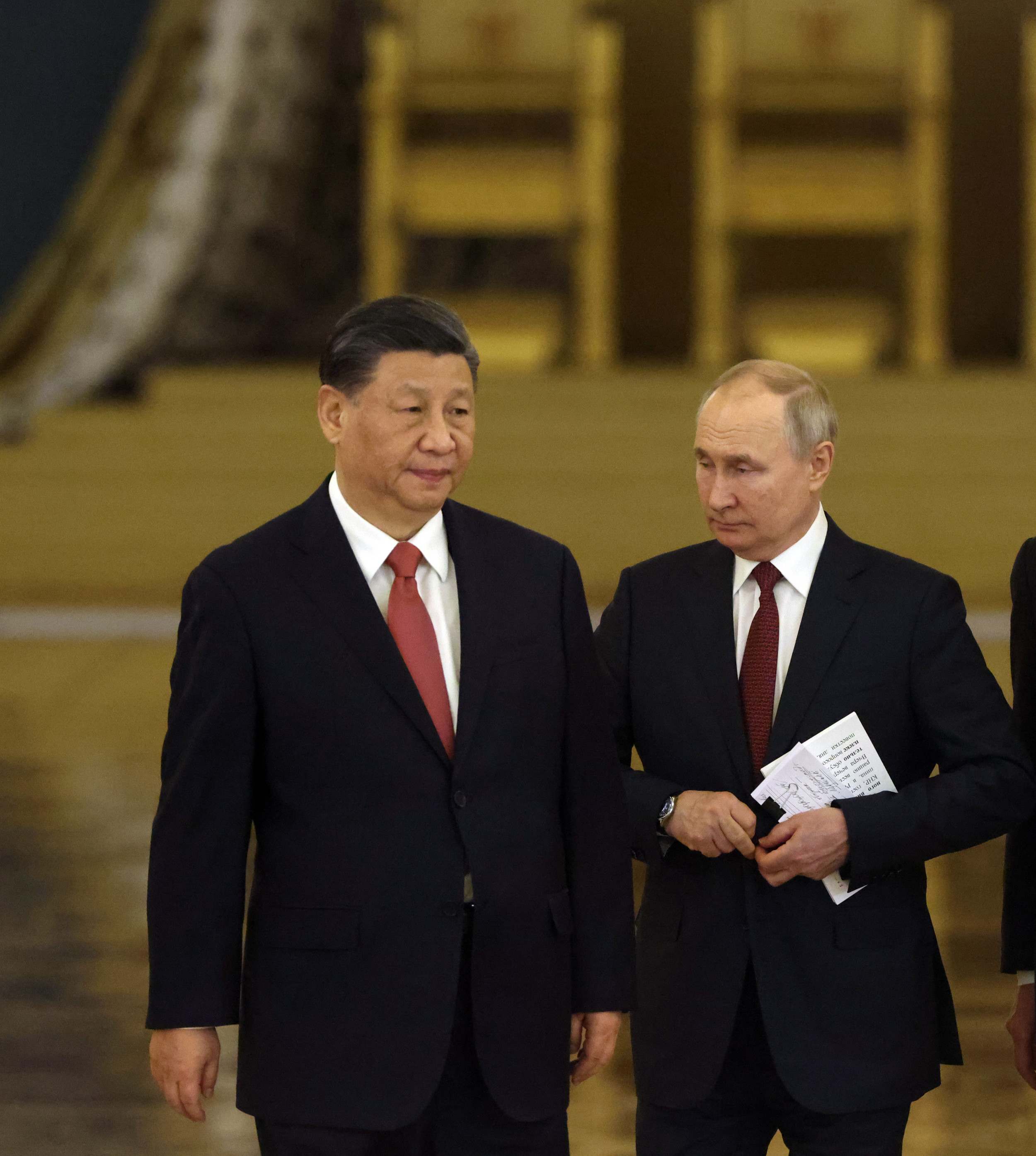Friendship means telling hard truths about the endgame in Ukraine
The handwriting is on the wall. As extensively covered in these pages, the evolution of U.S. domestic politics — as indicated in critical commentary from prominent political figures by no means limited to the right wing of the Republican Party — makes it increasingly clear that
President Biden’s policy of robust, largely unconditional military and financial support of Ukraine cannot, and probably should not, be sustained.
To give Gov.
Ron DeSantis (R-Fla.), Rep.
Kevin McCarthy (R-Calif) and other naysayers their due, U.S. officials should never issue “
blank checks” in support of any policy, save to counter an existential threat. Resources and risks must always be carefully calibrated in proportion to the genuine national interests at stake.
Despite the foolishly narrow
terms in which he has framed the issue, DeSantis is right: The Russian invasion of Ukraine, on its own, is no threat to U.S. national security. It is only when the issue is viewed more broadly, in the context of the continued aggressive Russian adventurism the sacrifice of Ukraine could incentivize — to say nothing of the demonstration effect which Ukraine’s conquest would register in Beijing — that we begin to assess the actual national security stakes involved. Even then, it would be hard to argue that the full defense of every inch of Ukrainian territory is absolutely vital to Western interests.
The shift in the U.S. political zeitgeist has surely not gone unnoticed in Kyiv, but neither should it be ignored by the
Biden administration. Now is the time for the administration to engage in some hard critical thinking, followed by tough talk in Kyiv, in NATO capitals, and yes, in Moscow.
Although the stakes I dealt with were decidedly lower, the current situation puts me in mind of a mission I undertook 20 years ago in northern Iraq, just three months before the March 2003 U.S. invasion.
CIA’s robust pre-invasion intelligence campaign, which depended upon Iraqi Kurdish support for teams operating at considerable peril within the country, was at risk. Fearful that U.S. threats of war with Saddam might be nothing more than a bluff that would leave them vulnerable to vicious reprisals, Kurdish leaders were weighing whether to cut a new deal with Baghdad of the sort they had negotiated in the past, which would have worked heavily against our interests.
At the same time, the U.S. was actively trying to convince a reluctant Turkish government to allow the U.S. 4th Infantry Division to transit Turkey and invade Iraq from the north (while the main force moved up from Kuwait). Though the likelihood of Turkish permission was low, all anticipated that the price for Turkish cooperation, if it came, would be a U.S. agreement to allow Turkish forces to accompany the division into Kurdish-controlled northern Iraq, where the Turks would have their own agenda.
Despite the fact that the Iraqi Kurds were fierce, avowed enemies of the Turks, no one in the George W. Bush administration thought to take them into confidence. That fell to CIA, and therefore, to me.
After providing Kurdish leaders the assurances they sought, I came to the bad news: If the Turks allowed the 4th Infantry Division to pass, they would insist on sending troops to accompany it. And if the Turks agreed, in effect, to join the U.S.-led coalition, the U.S. could not say no.
Kurdish leader Masoud Barzani responded with expected truculence, saying his troops would shoot any Turkish troops that cross the border. I looked at him with feigned impassivity. “No,” I said evenly. “You won’t.”
I explained that Turkish troops, if it came to that, would not be transiting the border alone. “They will be with us,” I said. And if Kurdish
Peshmerga forces engaged them, they would be considered defenders of Saddam by U.S. forces, and treated accordingly.
Though he was clearly unhappy, the rest of the conversation with Masoud was far more agreeable and constructive. That was only possible because Masoud knew throughout that he was dealing with a friend, one who had come not to threaten, but to do him the courtesy of telling him the unvarnished truth about a situation neither of us could avoid.
The time is fast approaching when a senior representative of the Biden administration will need to begin a similarly tough, realistic — and empathetic — dialogue with Zelensky. Biden is surely seen as a great friend in Kyiv. But his ability to deliver on his implicit and explicit promises of support for Ukraine “
for as long as it takes” is likely to be curtailed in the near future. That’s something he can’t help. Now would be the time to begin to disabuse Zelensky of the notion that he can count on unqualified U.S. and Western support for war aims that he sets unilaterally.
Specifically, Zelensky must be pushed in the direction of a negotiated solution, likely to include territorial concessions on Crimea and the Donbas. That would be admittedly unpalatable, to say the least. In a just world, it would be a non-starter. But in an American political environment that is increasingly focused on core U.S. interests, which include the maintenance of Ukraine as a bulwark again further Russian encroachment on Europe, it must also be acknowledged that not all of Ukraine is necessary to meet that goal. The offset, and the concomitant to a policy focused on European security, would be the extension to Ukraine of a far more explicit and permanent NATO security arrangement, probably ending in full NATO membership and Article 5 security guarantees.
The latter, of course, will surely be unacceptable to Russia. But in the end, Putin will have to accept that these are the wages of sin, the inevitable result of a disastrous miscalculation. He cannot expect that NATO will maintain something like the status quo ante in terms of its expansion, when he has gone so far as demonstrating that the possible eventuality which NATO’s post-cold-war continuation was designed to forestall is, in fact, not a hypothetical but a clear and present danger. His alternative will be to risk utter, humiliating defeat.
The U.S. point to him could be reinforced by an agreement to provide Ukraine with advanced American fighter aircraft. The agreement would be purely symbolic for some time to come, as such aircraft cannot be immediately absorbed by a Ukrainian air force lacking the necessary training and logistics. But the short-term political symbolism and the long-term threat to Putin’s strategy of attrition could be telling.
That is not to suggest for a moment that the U.S. should engage in negotiating Ukraine’s future. Kyiv is not Kabul, and cannot be treated as such. Ukraine will make its own sovereign decisions regarding war aims. But Zelensky will need to understand, given his near-abject dependence on Western support, that there will be limits on the aspirations the West will support, and therefore on what he can legitimately hope to achieve.
A nation once seen as hopelessly corrupt and tied only tenuously to Western values, Ukraine has become an international symbol of freedom, democracy and principled resistance to aggression. Anyone involved in dealing with Ukraine on behalf of the U.S. cannot be unmoved by that. But politics and geography are real. Neither Ukraine nor we can help that it shares a long border with a large, powerful and paranoid neighbor. Ukraine’s friends and supporters have interests that will eventually overshadow their affections, and their resources are finite.
Just as I was called upon to do in northern Iraq 20 years ago, that is the message which can and must be conveyed by a true friend in Kyiv.
Robert Grenier served for 27 years in the Central Intelligence Agency, ending his career as director of the CIA CounterTerrorism Center, responsible for all CIA counter-terror operations around the globe. He is the author of “88 Days to Kandahar: A CIA Diary.”
The handwriting is on the wall. As extensively covered in these pages, the evolution of U.S. domestic politics — as indicated in critical commentary from prominent political figures by no means lim…

thehill.com
Food for thought.


